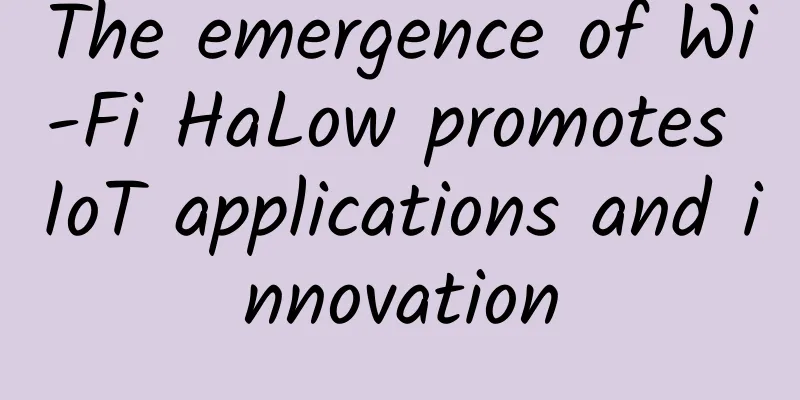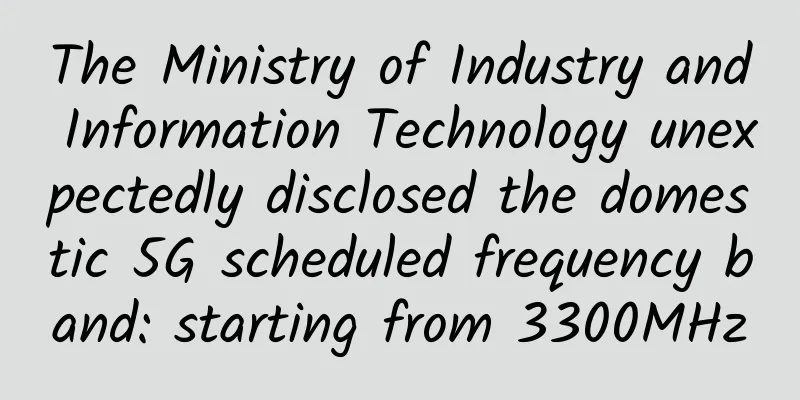The emergence of Wi-Fi HaLow promotes IoT applications and innovation

|
Few emerging technologies have the transformative potential of the Internet of Things (IoT). Beyond the increased convenience offered by the billions of smart, connected devices already in homes and businesses, much of the excitement surrounding the IoT is due to its potential promise to reshape the way we connect, communicate, share information, and interact with the world. Despite all the hype over the Internet of Things over the past decade, the reality is that most supporting wireless technologies are still in their relative infancy, hampered by connectivity challenges such as the limited range and overall functionality of the current Wi-Fi protocol. In short, the Wi-Fi standards currently in use are unable to establish a truly connected ecosystem of smart devices, where hardware can seamlessly communicate with each other over greater distances, regardless of location. Recognizing that new capabilities are needed to accelerate IoT adoption and innovation, we are working with the Wi-Fi Alliance to develop the Wi-Fi CERTIFIED HaLow program to promote the next generation of Wi-Fi protocols designed to overcome the range limitations of existing wireless standards. Based on the IEEE 802.11ah standard and available through the certification program launching in November 2021, Wi-Fi HaLow extends the range of access points to create more reliable networks throughout a building, campus or property, simplifying the delivery and management of intelligent connectivity solutions for users and service providers. Features of Wi-Fi HaLowWhile Wi-Fi HaLow’s extended range is one of its core strengths (indeed, it’s critical to the maturation of IoT technology), the new protocol also has equally noteworthy features that service providers and consumers should keep an eye on: • Robust connectivity. In addition to being able to communicate over long distances, IoT devices must also be optimized to penetrate obstacles without the high cost and maintenance of multiple routers and access points. Wi-Fi HaLow is designed to operate using sub-GHz frequency signals, enabling IoT devices operating in this band to transmit data over longer distances and more easily penetrate structural obstacles. Meeting the transformation challenge• Compatibility with existing devices. One of the main challenges is ensuring compatibility with existing IoT devices. Retrofitting or upgrading devices to support new protocols can be expensive and time-consuming. To address this, conduct a comprehensive assessment of the existing IoT infrastructure to determine device compatibility with Wi-Fi HaLow. Develop a phased implementation plan to gradually replace or upgrade devices, prioritizing mission-critical systems. • Staff training and knowledge. Implementing Wi-Fi HaLow requires a deep understanding of the technology and its benefits. IT staff may face challenges managing and maintaining the new protocol. This makes it important to invest in a training program for IT staff. Engage with industry experts or Wi-Fi Alliance resources to ensure staff are aware of the latest developments. • Cybersecurity and privacy issues. Transitioning to Wi-Fi HaLow involves adopting new security protocols, which can be complex and require attention from IT security teams. That’s why it’s important to work with security experts to review and implement Wi-Fi HaLow’s enhanced security features. Develop comprehensive security policies and guidelines to maintain the integrity of your IoT network. The next step towards a seamlessly connected futureWi-Fi HaLow is becoming increasingly popular in the IoT ecosystem, from smart homes to smart factories and cities. There is every reason to believe that Wi-Fi HaLow is the missing link to accelerate IoT adoption and innovation. Its ultimate impact on the way we communicate and interact, both individually and collectively, will be revolutionary. |
<<: Mercury enables remote procedure calls (RPC) for high performance computing
>>: IoT Networks for 5G Massive Machine Type Communications (MMTC)
Recommend
ThomasHost: $5/month KVM-2GB/50GB/1G port unlimited traffic/6 computer rooms available
I searched and found that the blog shared informa...
Five IoT product design concepts to attract and retain the younger generation of consumers
The post-2000s are an emerging generation of cons...
Friendhosting Summer Promotion: All VPSs are as low as 55% off, and unlimited traffic for 10 data centers for half a year starts from 8 euros
Friendhosting sent a promotional email yesterday ...
Amazon Sidewalk, a Wi-Fi-sharing project, will go live on June 8
Amazon may not be as well-known as Google, Apple,...
A 100% timeout murder caused by maxing out the bandwidth!
[[421757]] Verse: Do not advise others to do good...
Let's talk about the communication protocol I2C subsystem
I2C Transfer Definition of timing To explore the ...
The future of work: In a hybrid world, office space cuts are coming
[[440952]] As the pandemic continues to spread, m...
Differences between Single Mode Fiber and Multimode Fiber
What is Fiber Optic? Fiber optics is a type of ne...
It feels so good to be validated!
Hello everyone, I am Xiaolin. Previously, I answe...
Interviewer asked: Tell me about the principle of IP address allocation
1. Introduction to network model In computer netw...
Current status of Chinese domain names: low application level and potential security risks
Recently, at the Second China Domain Name Develop...
Comprehensive Anatomy of Data Center Facility Planning and IT Operations Checklist
Making the right choices in terms of data center ...
The future is here. How can operators accelerate innovation in blockchain applications?
At present, there are more than 1,400 blockchain ...
The web standard is always MIME version 1.0
Introduction There is no order without rules, and...
Network literacy post: Fix the missing gateway address in 10 seconds
A few days ago, I received a request for help fro...









